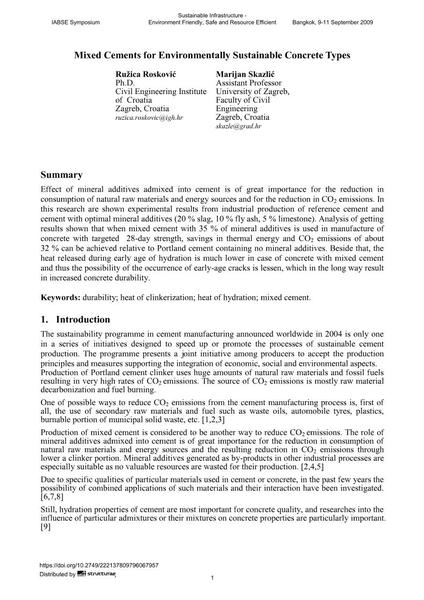Mixed Cements for Environmentally Sustainable Concrete Types

|
|
|||||||||||
Détails bibliographiques
| Auteur(s): |
Ružica Rosković
Marijan Skazlić |
||||
|---|---|---|---|---|---|
| Médium: | papier de conférence | ||||
| Langue(s): | anglais | ||||
| Conférence: | IABSE Symposium: Sustainable Infrastructure - Environment Friendly, Safe and Resource Efficient, Bangkok, Thailand, 9-11 September 2009 | ||||
| Publié dans: | IABSE Symposium Bangkok 2009 | ||||
|
|||||
| Page(s): | 60-67 | ||||
| Nombre total de pages (du PDF): | 8 | ||||
| Année: | 2009 | ||||
| DOI: | 10.2749/222137809796067957 | ||||
| Abstrait: |
Effect of mineral additives admixed into cement is of great importance for the reduction in consumption of natural raw materials and energy sources and for the reduction in CO₂ emissions. In this research are shown experimental results from industrial production of reference cement and cement with optimal mineral additives (20 % slag, 10 % fly ash, 5 % limestone). Analysis of getting results shown that when mixed cement with 35 % of mineral additives is used in manufacture of concrete with targeted 28-day strength, savings in thermal energy and CO₂ emissions of about 32 % can be achieved relative to Portland cement containing no mineral additives. Beside that, the heat released during early age of hydration is much lower in case of concrete with mixed cement and thus the possibility of the occurrence of early-age cracks is lessen, which in the long way result in increased concrete durability. |
||||
